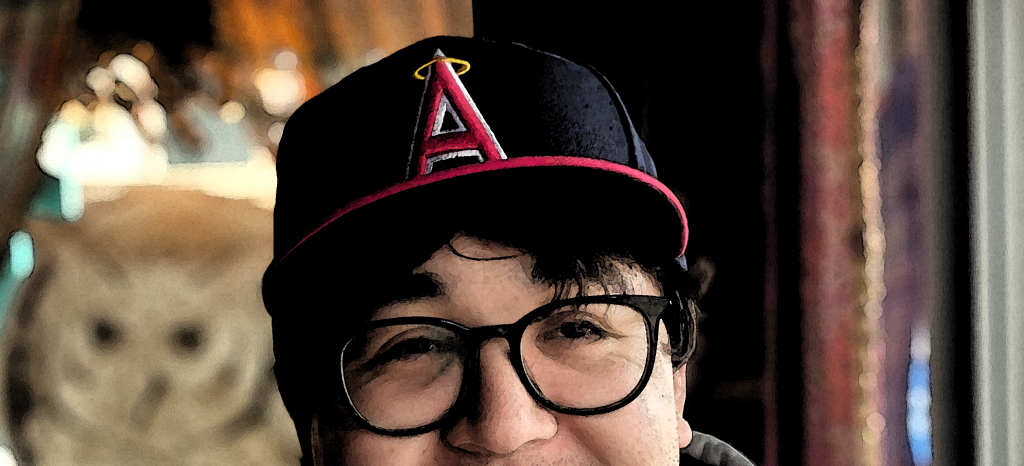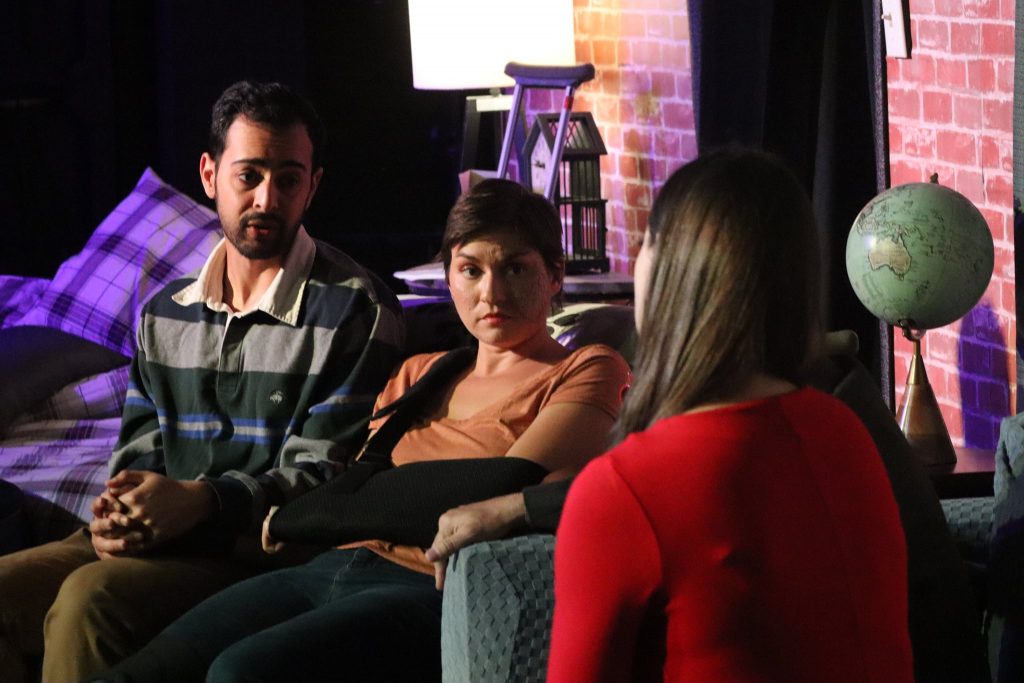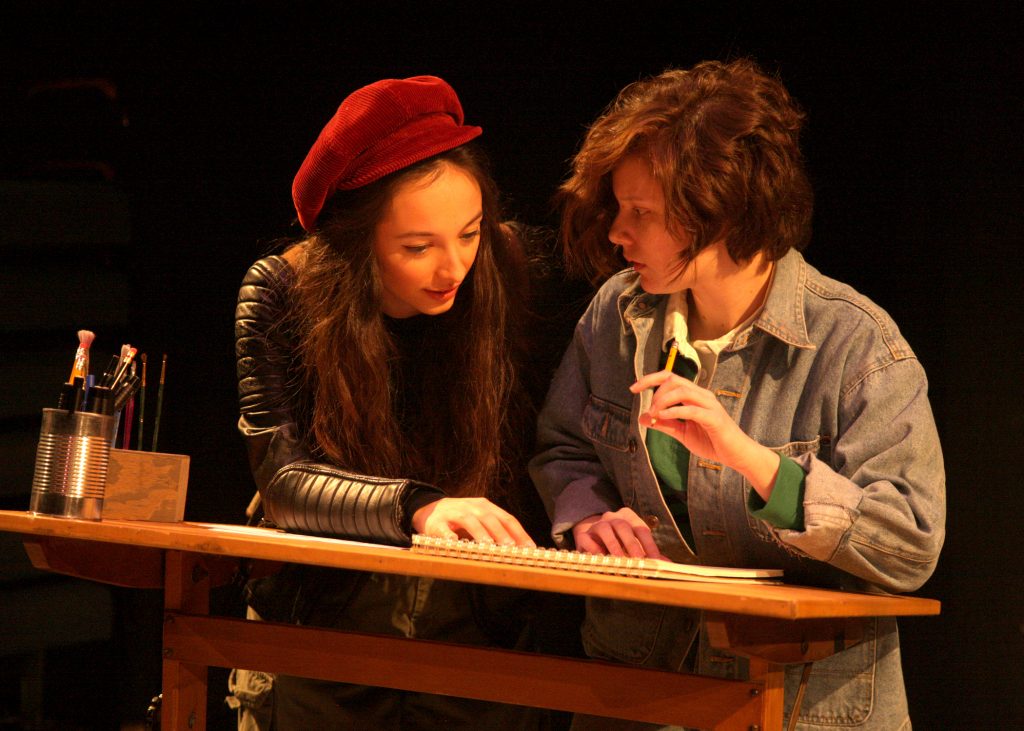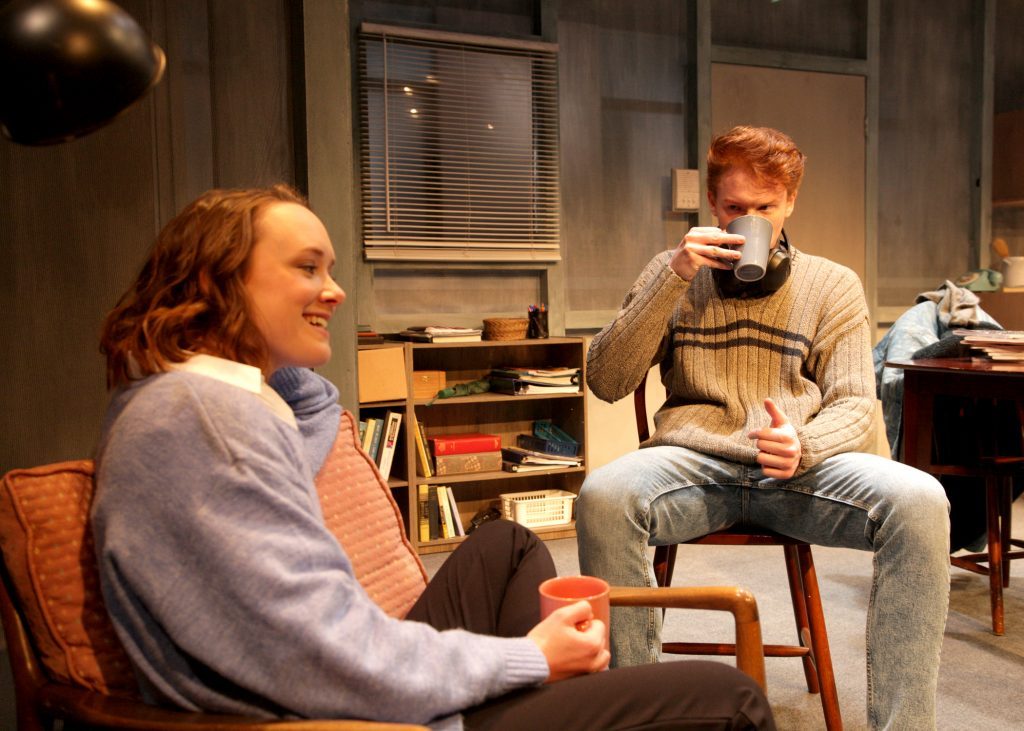Written by Mike Martin
It’s never easy to review what is essentially educational theater, but I tip my hat to the La Habra High School Theater Guild for opening themselves to criticism on their latest production, The Plummer Project.
First, let me say that this production is incredibly ambitious. The LHHS company has produced an interactive theater experience inside the grand old Plummer Auditorium in Fullerton and put the hoary old space to as good a use as anything I’ve seen there in years. They are producing three separate shows running for approximately an hour each. Any given patron can only see two of these tracks on a given night (one before and one after intermission) with the story lines determined by a random distribution of wristbands. Each story winds its way through the interior and grounds of the auditorium and occasionally splits off into even smaller vignettes as audience members are singled out for one on one interactions away from the main group. This makes for a theater experience that can differ wildly from one viewer to the next.
I’ve seen there in years. They are producing three separate shows running for approximately an hour each. Any given patron can only see two of these tracks on a given night (one before and one after intermission) with the story lines determined by a random distribution of wristbands. Each story winds its way through the interior and grounds of the auditorium and occasionally splits off into even smaller vignettes as audience members are singled out for one on one interactions away from the main group. This makes for a theater experience that can differ wildly from one viewer to the next.
While this is an interesting idea conceptually, it takes a lot of hard work and coordination to pull off. The Plummer Project is effective on many levels but does fall a bit short off the mark in others.
My own experience was a tale of two halves, my enjoyment level rising as the night progressed. One of the largest gripes I have about the evening is that the show itself does little to explain what it is meant to be or how the audience is meant (or allowed) to interact with it. While waiting for the show to start, the audience cues up in a tent outside the building and it is vaguely described that they are attending an inauguration party for Mayor Hale and that the year is 1930. I say vaguely because aside from the Mayor himself (who wandered through the crowd welcoming us) there was very little present to indicate place and time. I had to look at the program to get most of my clues as to what to expect. I suspect some of the guides were meant to be interacting with us as well to lay the groundwork, but sadly they seemed more interested in sticking to themselves than engaging. It was only just before the show got underway that a young couple approached and made a pained attempt at some improv. I could only imagine an authority figure somewhere off in the wings pushing them towards me saying, “You get over there and tell those people you’ll bring your wife out from Ohio once you’ve made your fortune in textiles!”
Once the show began, I was whisked off to a hours worth of ghost stories. These were often artfully staged and made some great use of the somewhat spooky ambiance of The Plummer (at least I’ve always thought so). My only issue with this first track was that it consisted almost entirely of movement pieces that were narrated by two tour guides. Nothing wrong with that in small doses, but it started to feel a bit repetitive as the first act wore on. Additionally (and strangely) none of the stories had to do with the Plummer’s own storied paranormal occurrences. Given the name and focus of the show, it seemed an odd misstep. I had almost given up hope on the “interactive” portion of the evening when I was cut from the crowd for a little alone time with certain parts of the story. In one instance I tap-danced for Ziegfeld (who was very impressed with my skills) and in another, stranger encounter I was put into a tiny room with a brusque young man who informed me that it had been decided one of the outdoor murals would be painted over. Both actors were quite good, but I wasn’t sure what to make of that second interlude. It almost felt like I had been accidentally sucked into another storyline. That being said, those two interactions coupled with the way the first act ends (I won’t spoil it) had my hopes up for more to come.
 The second tour was definitely more engaging, though it’s focus seemed less sharp. The best way I could describe it would be to say that it was a slice of 1930s Fullerton. We were introduced to Louis Plummer, school superintendent and all around good egg (more on this in a moment), and the plight of deported Mexican-American workers as they were driven from Bastanchury Ranch. It’s a strange dichotomy on it’s face that could have been tied together brilliantly with just a bit more attention to historical fact. As presented, Plummer is seen as a figure fighting to give work to the common man, which seems almost impossible to believe because Plummer was a noted Nativist and Klansman, a fact that seems like a no-brainer to put front and center. But if that was revealed then perhaps it was during a secret scene I was not privy to. Even so, I was far more involved in this storyline. The actors here had me packing oranges, dancing, clapping, drinking at the speakeasy, and generally becoming a part of the piece.
The second tour was definitely more engaging, though it’s focus seemed less sharp. The best way I could describe it would be to say that it was a slice of 1930s Fullerton. We were introduced to Louis Plummer, school superintendent and all around good egg (more on this in a moment), and the plight of deported Mexican-American workers as they were driven from Bastanchury Ranch. It’s a strange dichotomy on it’s face that could have been tied together brilliantly with just a bit more attention to historical fact. As presented, Plummer is seen as a figure fighting to give work to the common man, which seems almost impossible to believe because Plummer was a noted Nativist and Klansman, a fact that seems like a no-brainer to put front and center. But if that was revealed then perhaps it was during a secret scene I was not privy to. Even so, I was far more involved in this storyline. The actors here had me packing oranges, dancing, clapping, drinking at the speakeasy, and generally becoming a part of the piece.
Two things recommend this production despite it’s shortcomings on the writing and directing fronts. First, The Plummer itself is as much a performer in this production as anyone, and a dimly lit tour after the sun goes down is almost worth the price of admission alone. Secondly, once the show began in earnest, the performers’ dedication to the work was palpable. The book-ending finales of both acts are poignant and dedicated and some individual performances were quite compelling. Throughout the evening I looked back on my own high school acting portfolio and was struck with just how amazing a feat it was to even attempt what the LHHS company are doing. I encourage anyone with a taste for Fullerton’s often overlooked history or a desire to support some very passionate young performers to support The Plummer Project with their time and their wallets.
JANUARY 19 – 25, 2016
Be the first to leave a rating.

























































Thank you for the wonderful piece on Grace McLean by Zack Johnston!!